Exactly how long is 7 inches? is 7 inches big?
Many people are curious about this specific length and commonly find themselves asking questions such as “How long is 7 inches?” or “What is the actual length of seven inches?” or “Is seven inches long?”
In this article, I will clearly illustrate the concept of 7 inches by comparing it to familiar items. This approach will help you to grasp the length easily and practically.
Numerous everyday objects can effectively illustrate what 7 inches looks like, as they are all roughly that length. This helps us easily understand and visualize the measurement in practical terms.
How long is 7 inches on a ruler?
A ruler is a useful tool that clearly displays measurement units like millimeters, centimeters, and inches. A ruler’s precise markings make it ideal for accurately measuring shorter distances.
When we look at different measurement units, we will see how 7 inches stand out on a ruler. This insight will improve your understanding and appreciation for measurements.
There are two categories of measurement units: the imperial system and the metric system.
- The ‘imperial system (U.S. Customary System)’ is widely used in the United States for the majority of daily activities.
Imperial/US Units:
7 inches = 0.583333 feet (ft)
7 inches = 0.194444 Yard (yd)
7 inches = 0.00011048 Miles (mi)
- The metric system is the universal standard for measurement, embraced by countries worldwide. Common metric units include millimeters, centimeters, and meters.
Metric/Length Units:
7 inches = 177.8 Millimeter (mm)
7 inches = 17.78 Centimeter (cm)
7 inches = 0.1778 Meter (m)
While the metric system is widely recognized as the standard, many regions (like the United States) continue to use the imperial system due to long-standing traditions.
How to measure 7 inches without a ruler?
If you have a question, how can I measure 7 inches without a ruler? Is it possible to estimate the distance without using a ruler or tape measure? The answer is yes, you can.
When you don’t have a ruler or tape measure handy, a few common objects can help you visualize 7 inches.
You can easily visualize seven inches by using everyday objects that you already have. People have been using this method since ancient times, and it is still useful in many situations.
This simple technique will enhance your measuring skills and offer practical solutions in various situations even today. Embrace this timeless method to enhance your understanding and measurement skills!
Common things that are 7 inches long
Here are some common things that are approximately 7 inches long. These items can give a sense of what 7 inches might look like in everyday life!
These items are easily available, thus they can be used to measure length in the absence of a ruler or tape measure.
Table spoon

Everyone is familiar with a tablespoon, which is routinely used in every family for serving or consuming meals. The ‘tablespoon’ is often referred to as a ‘plate spoon.
In the United States, the usual length of a tablespoon (table spoon) is roughly 7 inches. This is the standard length for a conventional serving spoon used for eating or serving food.
To get a rough concept of the seven-inch length, a tablespoon is useful. You can use it to validate the desired length because it is conveniently accessible.
Butter knife
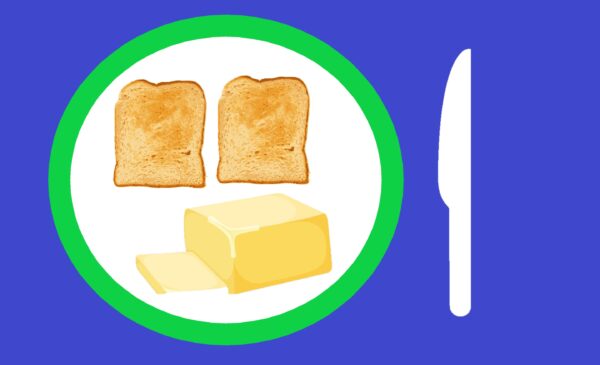
Butter knives are common in many households, especially those that regularly use butter or spreads. While their primary purpose is to spread butter, they can also be used for spreading peanut butter, jam, or cream cheese.
The standard length of a butter knife is approximately 7 inches, as this size is ideal for spreading butter or soft spreads. These knives have blunt edges and rounded tips, and they are slightly smaller than dinner knives.
If you’re in a situation where you need to measure something and don’t have a ruler handy, you can use a butter knife to obtain an approximate sense of a 7-inch length.
However, remember that this is only a temporary solution. For accurate measurements, it’s best to use a ruler or tape measure.
6-inch ruler

A 6-inch ruler is compact, portable, and ideal for everyday use. It is perfect for students, engineers, designers, and carpenters for tasks like measuring smaller objects or drawing straight lines.
The entire length of the 6-inch ruler, including the extra marked-free space that the sides take up, might be anywhere from 6.5 to 7 inches. This ruler’s whole length is just a few millimeters short of seven inches, so it is helpful to give you an idea of how long it is.
The actual length of this ruler provides the solution to your query, “How long is 7 inches?“
Personal-sized pizza

A “personal pizza,” often referred to as a “small pizza,” is the perfect size for one person to enjoy, offering just the right amount of deliciousness without any waste.
A 7-inch pizza is known as a “personal-sized pizza” in the USA, which makes it the ideal option for a single individual seeking a filling dinner. Compared to the more popular sizes, such as 10-, 12-, or 14-inch pizzas, which are usually intended to feed two or more people, it is smaller.
Personal-sized pizzas typically have a diameter of about 7 inches, though it can sometimes be slightly more or less. This gives a good sense of the seven-inch length.
Business card
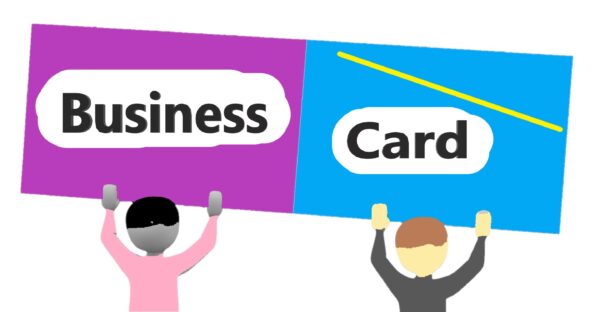
Almost everyone carries business cards in their wallets for good reasons, but have you ever wondered what the standard dimensions of a business card are?
Understanding these dimensions can help you measure length when a ruler isn’t available, enabling you to measure a particular length when a ruler is unavailable.
A standard business card is approximately 3.5 inches (89 mm) long and 2 inches (51 mm) wide. You will use the length or width of the card for your measurement.
The length of the card will be used to get the measurement of 7 inches. Place the two business cards lengthwise, edge to edge, to achieve 7 inches (3.5 inches + 3.5 inches = 7 inches).
If you have only one business card with you, place it lengthwise on a flat surface and mark both its starting and ending points, which should be at 3.5 inches. Then, move the card to the 3.5-inch mark, align its edge with that mark, and make another mark at the end. This will give you a total measurement of 7 inches.
Poker card
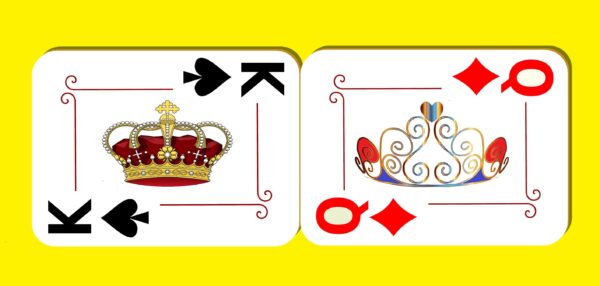
A poker card refers to the standard deck of playing cards used in poker games, which are popular and commonly played across the USA. The terms poker cards and playing cards are often used interchangeably.
The standard dimensions of a poker card used in the USA are typically measured 3.5 inches (88.9 mm) long and 2.5 inches (63.5 mm) wide.
If you need to measure 7 inches and don’t have a ruler, you can use a simple method with two poker cards. Lay the cards lengthwise, end-to-end, without any gaps. Each poker card measures 3.5 inches, so when you place them together, they will add up to exactly 7 inches.
Bridge card
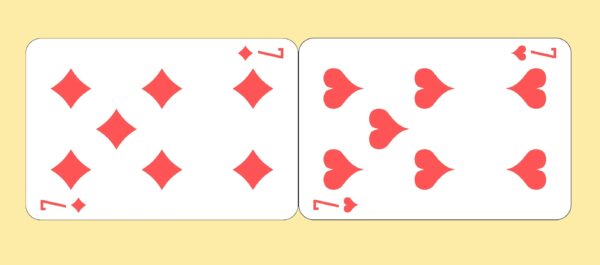
In the USA, bridge cards are commonly used to play the card game bridge, which is a well-known trick-taking game played by four players in two partnerships.
Poker cards are commonly used in poker and related games, bridge cards are specifically designed for bridge and similar card games where a smaller card size is more practical.
Bridge is played with a standard 52-card deck, which is slightly longer and narrower than regular poker cards. The deck’s dimensions are usually 2.25 inches in width by 3.5 inches in length.
If you need to measure 7 inches and don’t have a ruler, you can use a simple method with two bridge cards. Lay the cards lengthwise, end to end, with no gaps between them. Each bridge card measures 3.5 inches, so when you place them together, they will total exactly 7 inches.
7 us quarter

Every American is familiar with the US quarter, and most carry it with them. The choice to carry a quarter or any other form of currency is entirely up to the individual.
Do you know that a US quarter is 0.955 inches in diameter? This is just a few mm shorter than 1 inch.
When you find yourself needing to measure 7 inches but don’t have a ruler on hand, a US quarter can be an incredibly handy solution.
Measuring 7 inches with quarters is incredibly easy! Just arrange 7 quarters on a flat surface, lying them side by side with no gaps in between. You’ll create a line that comes remarkably close to 7 inches—a practical and convenient method for quick measurements!
This method offers an effective and reliable way to measure 7 inches using just quarters, making it a quick and convenient solution for your needs.
debit or credit cards
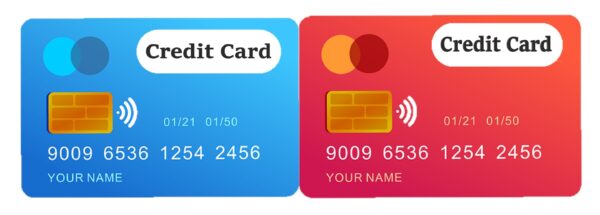
In today’s digital era, having a credit or debit card in your wallet is essential for convenience. Credit cards are commonly used for various purposes, including making purchases, paying bills, shopping online, and consolidating debt.
You carry these cards with you all the time, but do you ever think about their dimensions? Understanding the length and width of these everyday items might be helpful for you in certian situation.
The standard global dimensions of a credit card are 3.37 inches (85.6 mm) in length and 2.125 inches (53.98 mm) in width.
To effectively visualize a length of 7 inches, simply lay two credit or debit cards flat on a surface in a straight line, making sure there are no gaps between them. This simple arrangement will provide you with a clear and practical understanding of what 7 inches truly looks like.
us dollar bill & us quarter
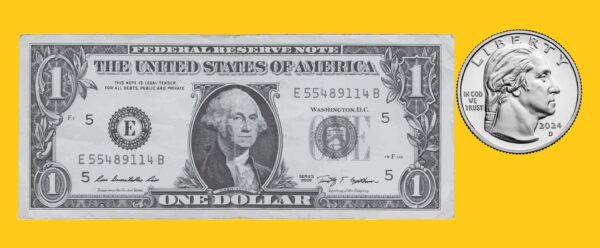
Many Americans still carry paper currency and US quarters for daily expenses, even in this digital age. It is unlikely that physical currency will disappear in the near future. It’s clear that cash isn’t going anywhere anytime soon.
You might be amazed to discover that combining one US dollar bill with a US quarter gives you an accurate measurement of 7 inches. This simple trick can be a handy tool for quick measurements!
Position a US dollar bill and a US quarter next to each other on a flat surface, ensuring there are no gaps between them. Remarkably, their combined length from one end to the other measures exactly 7 inches.
This all happens because the length of all US paper currencies are 6.14 inches (156 mm) which is just 3 mm shorter than 6-inch and the diameter of US quarter is 0.955 inches its almost near to 1-inch.
This occurs because the length of all US paper currencies is 6.14 inches (156 mm), which is just 3 mm shorter than 6 inches. Additionally, the diameter of a US quarter is 0.955 inches, almost reaching 1 inch.
Small paper clips

Paper clips are widely used in offices, schools, and homes to hold sheets of paper together. These clips are an effective tool for keeping your documents organized and secure.
Paper clips are considered as a stationery item, and it is available in a variety of sizes. Small paper clips are usually around 1 inch (25 mm) in length, and that able to hold 10 sheets of paper.
Measuring with the small paper clip is easy because it has a perfect one-inch length. Paper clips are easily accessible items almost anywhere, so this must be your first choice to measure something in the absence of ruler.
To measure seven inches, align seven small paper clips (one-inch size) edge to edge, gap-free, on a level surface. This will yield a length of about seven inches.
Crown caps

Metal crown caps are used globally to seal glass bottles of beverages. These caps are so common that no one is curious about them, and understandably so. But they deserve our attention because these caps ensure the safety and quality of the beverages inside.
Crown caps are typically 26 mm in size, which is almost equivalent to 1 inch (25.4 mm). When you first open a bottle, the cap is permanently deformed, this feature not only guarantees freshness but also offers peace of mind to consumers.
Measuring 7 inches using crown caps is very simple. Just place seven crown caps on a flat surface in a straight line, edge to edge, with no gaps between them to achieve this measurement.
Conclusion:
None of the non-standard measurement tools mentioned above can replace a ruler or tape measure. For more accurate measurements, it is best to use a ruler or measuring tape.
However, if you are in a hurry and do not have a ruler on hand, you could use it as a rough guide, keeping in mind that it is an approximation.
